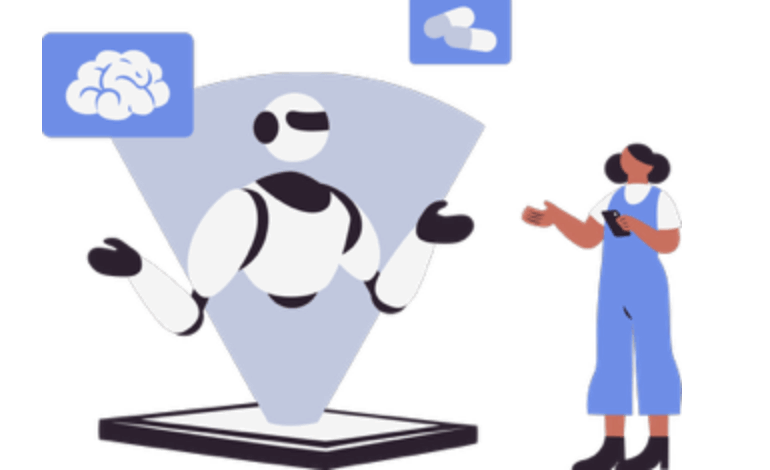
Over the past few years, AI in healthcare has undergone the typical hype cycle – big promises, scattered pilot programs, and now, finally, something real. We’re seeing AI actually make a difference, especially in one area that often gets overlooked: the daily operations of private practice.
While most people talk about AI in diagnostics or decision support, what I’m seeing on the ground is a lot more practical: using AI to make front desks more efficient, calendars more full, and teams less overwhelmed, demonstrating the tangible benefits of AI in everyday operations.
I’m Jay – I run CORE4 Growth, where we help independent healthcare practices build innovative, scalable systems using AI. We’ve worked with over 40 clinics around the U.S., and this is a quick breakdown of how we’re seeing AI go from idea to impact.
The Hidden Bottleneck: Admin Overload
Private practices deal with a ton of constraints:
- Small teams doing too much
- Outdated EMRs and clunky workflows
- Lots of manual work for stuff that should just run on autopilot
On top of that, demand’s gone up since COVID-19, but it’s more complicated than ever to find great staff. That’s where AI steps in – not to replace your team, but to take the boring, repetitive stuff off their plate, providing much-needed relief and support.
From Tools to Systems: Where AI’s Actually Helping
A year ago, most practices were dabbling in AI, perhaps with a chatbot or some text reminders. Today, the game has changed. The practices that are truly making a difference are implementing comprehensive AI systems. Here’s how these systems are revolutionizing healthcare operations:
1. Automated Nurtures That Actually Drive Sales
The multi-million-dollar practices we work with nurture leads for a minimum of 12 months. We help them build AI workflows that automatically nurture leads using real patient testimonials, review requests, success stories, and helpful info.
This doesn’t just “look nice” – it converts into revenue. Clinics we work with have closed millions of dollars worth of revenue by becoming more efficient than their compeition. They’re able to cut cost-per-lead and see higher conversion rates just by staying top-of-mind with thoughtful, timely follow-ups. Patients trust proof, and AI helps deliver it at scale.
2. AI That Answers the Phone
Let’s be honest – phones are a mess. Missed calls, long hold times, overwhelmed front desks. Now, AI phone agents can answer calls 24/7, handle common questions, book appointments directly into the electronic medical record (EMR), and route more complex issues to staff.
One of our clients booked 84 appointments in 30 days, and 39% of them came through an AI agent.
3. Automated Referral Follow-Up
Referrals usually mean faxes, voicemails, and someone chasing paperwork. We automate the entire loop, including notifying the referring provider, updating the system, and initiating any necessary follow-ups. It’s cleaner and faster, nobody’s dropping the ball, and everyone is on the same page.
4. Smarter Scheduling
No-shows and gaps in the schedule cost real money. We help practices automate:
- Reminder texts and confirmations
- Follow-ups with people who didn’t book
- Outbound calls to waitlists when someone cancels
The result? Schedules stay full.
5. Better Follow-Up After the Visit
Patient engagement doesn’t stop when someone walks out the door. We set up systems that:
- Text care instructions
- Check-in on recovery
- Bring back inactive patients at just the right time
It’s like having a digital assistant that never forgets.
Why It’s Working Now
Here’s what’s letting AI finally stick:
1. Everything’s Connected
Point tools are out. Our setups connect your voice system, CRM, scheduling, and follow-up – all in one seamless solution. That’s where the real magic happens.
2. Results > Buzzwords
We don’t build AI for the sake of AI. We build it to help practices:
- Save hours every week
- Improve patient experience
- Increase revenue without increasing staff
3. HIPAA Comes First
Yeah, we take compliance seriously. Everything we build is encrypted, auditable, and designed to ensure the security of PHI. No exceptions.
4. It Supports Staff, Doesn’t Replace Them
AI doesn’t take jobs – it takes tasks. When AI handles repetitive tasks, your team can focus on care, connection, and everything that truly requires a human touch.
What the Industry Can Learn From This
Want to scale AI the right way? Here’s what we tell every clinic:
- Map the patient’s journey. Start where things break and automate from there.
- Stop buying tools. Build systems that talk to each other.
- Bake in compliance. HIPAA isn’t optional – it’s the floor.
- Support your staff. AI should feel like a backup, not a competitor.
- Track what matters. If you’re not measuring time saved or revenue gained, what’s the point?
The Takeaway: AI Isn’t the Future – It’s Already Here
Independent practices aren’t waiting on some distant tech revolution. They’re already building AI into their daily workflows – and seeing real results:
- Fewer no-shows
- Shorter response times
- Less admin burden
- More revenue, exact headcount
At CORE4 Growth, we’re dedicated to helping practices turn technology into traction. Not someday. Right now.




